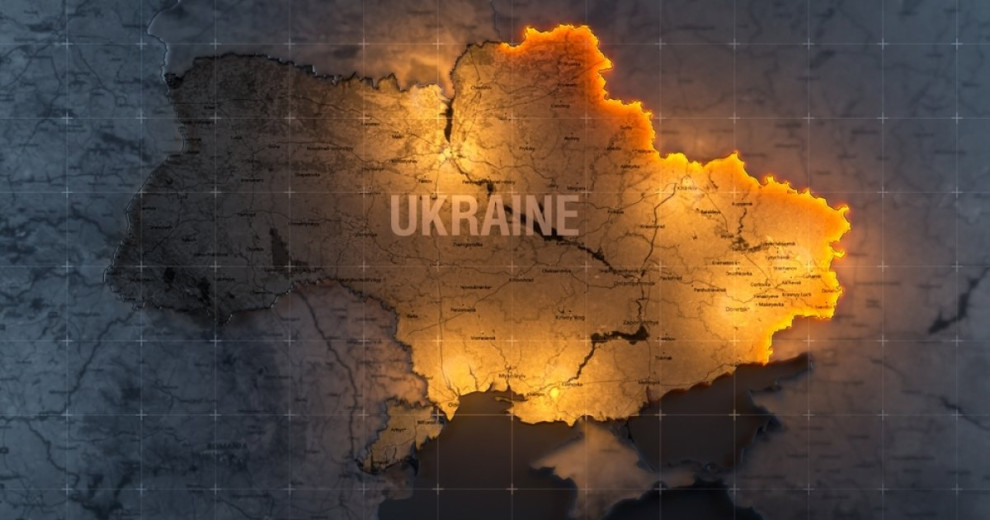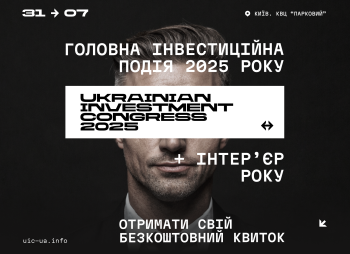Key points
- The financing need for the reconstruction of Ukraine will be huge
- Bilateral and multilateral donors have committed large sums
- Calls for a ‘Marshall Plan’ for Ukraine have intensified
- Private capital will be needed
- Blended finance can help private investors deploy impact capital
Discussions of what a post-war Ukraine will look like started almost immediately after Russia’s invasion on 24 February last year.
At a two-day conference titled ‘Ukraine Recovery Conference’, held in Lugano, Switzerland, in July 2022, calls for a ‘Marshall Plan’ – the US-sponsored post-Second World War European recovery programme – started to become more vocal. Participating countries signed a non-binding ‘Lugano Declaration’, committing to support the reconstruction of the country. The next edition of the conference will be held in London on 21 and 22 June this year.
The problem with a Marshall Plan for Ukraine is that the $13.3bn provided by the US for the reconstruction of Europe from 1948 onwards would be worth around $173bn (€161bn) today. That is a lot less than the financing needed to rebuild Ukraine once the war with Russia ends.
At the Lugano meeting, a detailed National Recovery Plan, designed by Ukraine’s National Recovery Council, was presented. According to Ukrainian authorities, the country needs $750bn, two-thirds of which should come from partners in the form of grants, debt and equity.
The scale of international support to the war-torn country has already been huge. According to the Ukraine Support Tracker, a database of military, financial and humanitarian aid to Ukraine created by the Kiel Institute for the World Economy (IfW Kiel), financial, humanitarian and military commitments by bilateral donors from 24 January 2022 to 15 January 2023 amounted to €143.63bn. The largest donor by far, however, is the US, with €73.2bn donated as of 15 January.
The overall figure grows to €156.9bn if non-bilateral donors – the IMF, the European Bank for Reconstruction and Development, the United Nations and the World Bank Group – are included.
The tenth release of the database, scheduled for 29 March, will most likely include the $15.6bn (€14.5bn) four-year financing package provided by the IMF. The Ukrainian government and the IMF announced they had agreed to the loan on 21 March.
While at the time of writing the agreement had yet to be ratified by the IMF board, the IMF expects that the financing will help Ukraine see through the next four years. The financing will depend on a two-phase programme of reforms centred on fiscal policy and competition.
The international community has been active on the political insurance front too. The Multilateral Investment Guarantee Agency (MIGA), the institution linked to the World Bank, has set up a Support for Ukraine’s Reconstruction and Economy (SURE) trust fund, to provide trade finance guarantees. Japan donated the first $23m and MIGA expects the fund to reach $300m. The agency has also worked with the European Bank for Reconstruction and Development (EBRD) in their first joint effort, to the benefit of the Ukrainian economy.
Better than a Marshall Plan
Yet, financing needs for Ukraine to see through the conflict and recover from it are such that mobilisation of private capital is crucial and urgent. The Marshall Plan provides plenty of lessons to be learned, but a concerted international financing effort to redevelop the country using public and private capital would undoubtedly have to be very different, says Bart Le Blanc, the Dutch economist, former chair of the APG Group and current chair of APG Asset Management’s supervisory board.
In a recent paper, Le Blanc argued that an international programme for the reconstruction of Ukraine should be designed according to a specific set of principles.
The programme should have a clear mission shaped by the United Nations’ Sustainable Development Goals (SDG). It should aim to involve the broadest possible community of donors and avoid repeating the Marshall Plan’s approach, whereby socialist countries were not involved as recipients or donors, and there was a strong element of political conditionality. The recipient base should be concentrated, with Ukraine and the neighbouring countries affected by the conflict as the sole recipients of financing. However, a special window for Russia should also be included.
There should be no preferential access to trade for donors and the programme should be implemented through local businesses to the benefit of local communities, provided that Ukraine continues to work towards strengthening the rule of law, fair competition and good governance. Finally, the programme should include all possible financing instruments and not consist mainly of loans.
Ukrainian leaders pave the way
The Ukrainian authorities have not been just passive receivers of bilateral and multilateral financing commitments. The government successfully negotiated a restructuring of Ukrainian debt (see box). It has made clear that it is committed to rebuild a new Ukraine, with an emphasis on climate change and innovation, and in accordance with the SDGs. President Volodymyr Zelensky has vowed to stamp out corruption after a series of scandals.
The incentives for businesses to invest in the country were enhanced by a law predating the war. The law established exemptions from corporate tax, VAT payments, customs duties and other taxes, simplified procedures as well as financial support from the state, among other things.
UkraineInvest, the government-sponsored entity set up in 2016 to attract foreign direct investment, liaises between Ukrainian authorities and the investors willing to obtain those incentives. The agency has recently been busy gathering support for Ukrainian businesses and presenting the many opportunities to invest now and in the future.
The Ukrainian government has also worked with high-profile names in the investment world. In November last year, BlackRock agreed to provide advice on designing an investment framework to create opportunities for both public and private investors to participate in the reconstruction. The parties agreed to a roadmap for the investment framework’s implementation.
The discussions were arranged by Andrew Forrest, founder of the Fortescue Metals Group, according to BlackRock. The firm’s CEO, Larry Fink, has said that investors will be flooding Ukraine once the war is over, but the firm’s advisory work so far is separate from any investment activity.
Last February, President Zelensky held a highly publicised meeting with senior JP Morgan executives. As part of the meeting, which included representatives from both the investment bank and the firm’s asset management business, Ukrainian leaders signed a memorandum of understanding whereby JP Morgan will advise on debt capital markets, infrastructure direct investing, payments, international consumer banking, commercial banking and development finance.
The firm will also consult Ukraine and engage international institutions on financial stabilisation, including Ukraine’s sovereign credit rating and the management of government liquidity, and the digitisation of the economy.
Clear impact opportunity
There is a clear mismatch between talk and action in mobilising private capital, but the opportunity for impact investors is clear. As the Ukrainian government leads the reconstruction of the country with the support of the international community, blended finance can unlock numerous opportunities for investors to earn a return and achieve measurable impact.
Among the institutions promoting blended finance initiatives is the EBRD. The bank also happens to be among the largest multilateral donors to Ukraine, thanks to a long and deep historical relationship with the country.
Debt restructuring: a qualified success
Russia’s war of aggression has put Ukraine’s finances under enormous pressure, but the strong international support extended by the international community has helped the government negotiate a restructuring of its sovereign debt.
JP Morgan led the $20bn-plus (€18.6bn) operation, completed in August last year. The bank has been active in the country’s debt markets for a number of years, having raised around $25bn worth of Ukrainian sovereign debt since 2010, including $10m since 2014. It also purchased $350m worth of bonds in 2019.
BlackRock, Fidelity International, Amia Capital and Gemsstock were among the largest holders of Ukraine’s debt, according to Reuters. Along with bilateral creditors such as the US, the UK and Japan, they agreed to a two-year debt freeze.
However, while the deal was hailed as a resounding success, not all Ukrainian state-owned entities managed to renegotiate the terms of their debt. Naftogaz, the energy firm, only managed to convince investors to delay repayments to one of its bonds. In March, the firm tried to offer a better deal to investors but at the time of writing, investors had yet to agree to delayed repayments to its bond that defaulted last year.
Before the start of the conflict, the 100-strong team responsible for the bank’s operations in Ukraine was based in Kyiv.
The EBRD has invested €18.1bn in Ukraine so far across 529 projects. Its current portfolio of projects is worth €4.67bn and the bank has committed to finance €3bn between 2022 and 2023. The first €1.7bn was deployed in 2022, plus an additional €200m mobilised from partner institutions.
Matteo Patrone, who manages the bank’s activities in Eastern Europe and the Caucasus having moved from Kyiv to Warsaw, says Ukraine has been one of the most prominent recipients of EBRD financing. “We invested €3bn in the three years prior to the conflict, which was a 60% increase from the previous three years. After Russia’s invasion we had to review our strategy for the country and re-focus on supporting the real sector. Our areas of focus are energy security, infrastructure, food security, the private sector and import-export activities. We are also exercising forbearance on our existing exposure,” Patrone says.
“In partnership with international donors, we have mobilised financing in the forms of grants and guarantees and provided liquidity to the Ukrainian government. However, our focus as a demand-driven bank is on long-term investments,” he adds.
As an emerging market, Ukraine is extremely attractive thanks not just to its ample endowment of natural resources but also to its human capital, as shown by the rapid development of the country’s IT sector, according to Patrone.
“Ukraine has made significant progress on many fronts since the Maidan Revolution in 2014. The trajectory has not been linear but the modernisation efforts have been strong, from the reform of the banking sector, to the curbing of space for corruption and the development of the corporate governance framework,” he says.
For these reasons, Patrone is optimistic that institutions will become heavily involved in Ukraine, as impact investors or in other forms. But the ways in which private institutions will be involved are not yet clear. Investors are perhaps more likely to direct capital to specific projects as part of public-private partnerships rather than fund structures.
Patrone says that the bank is open to discuss partnerships with private institutions in the future, and while it is unlikely to set up specific vehicles for institutional investors, it may co-invest with such vehicles if they meet the EBRD investment criteria.
Call to action
The uncertainty over the outcome of the conflict is obviously limiting the scope of conversations and of plans to deploy private capital in Ukraine with an impact investing approach. The involvement of private institutional investors is seen as a matter for the long-term future.
When asked to elaborate on a potential role of institutional investors, Le Blanc says: “I believe that the institutional investment world can play a role in certain areas that are extremely important both in the short-term and in the long-term, and help Ukraine to ultimately finance its own economic development.
“The most obvious first step is to work on Ukraine’s access to capital markets. It may take years for the country to successfully reach full standalone access, but if investors were to open the dialogues with the financial institutions and rating agencies, the step process would become clear. And this would lead to the rolling out of financial infrastructure and legislation, including laws against corrupt practices. There is a very important role for institutional investors in this.”
More importantly, the involvement of institutional investors could give impetus to financial diplomacy, according to Le Blanc.
“Financial diplomacy is likely to be a better platform than political diplomacy. In any case, a Cold War-type divide needs to be avoided. If the international dialogue were to focus on how to source and deploy financing for the reconstruction of the country and the region, the political barriers would become easier to overcome, and momentum would build towards ending the conflict,” he says.





.jpg)
